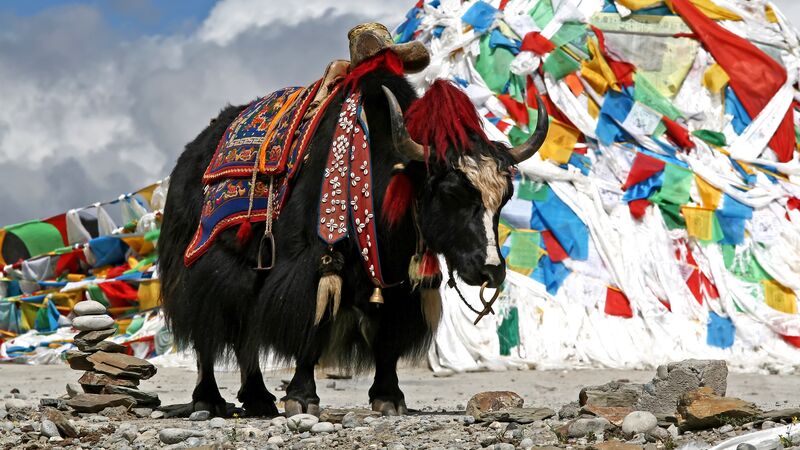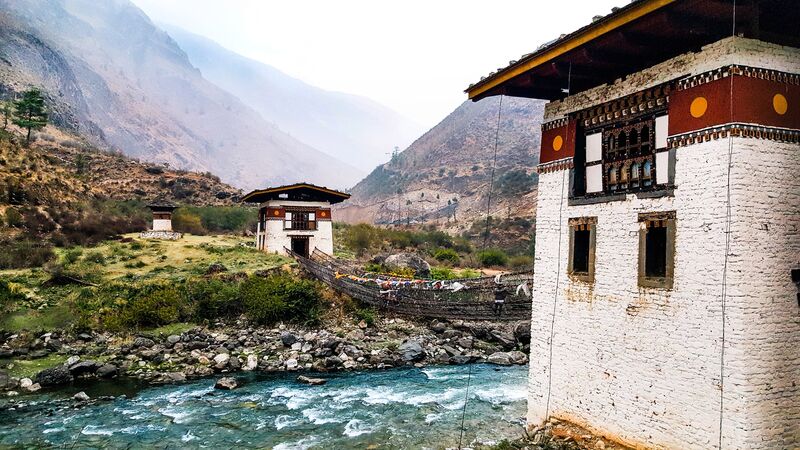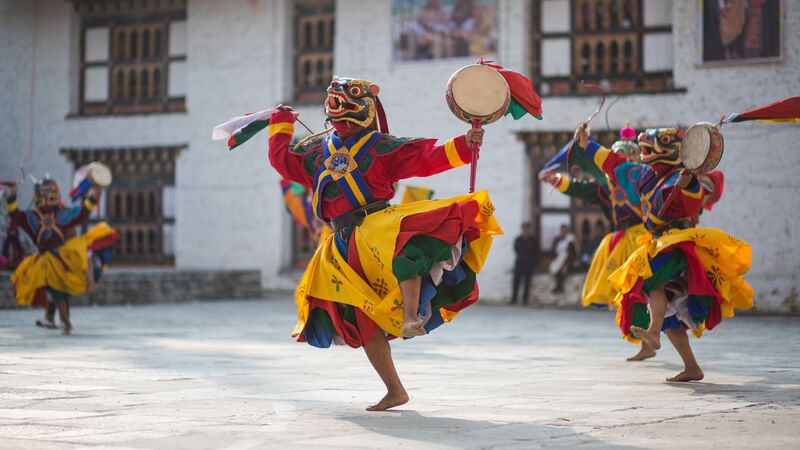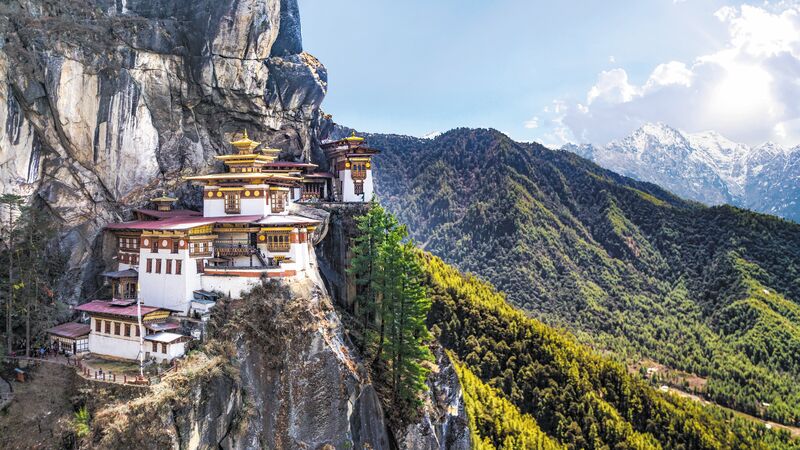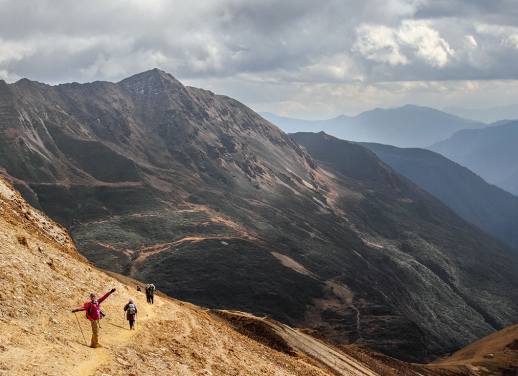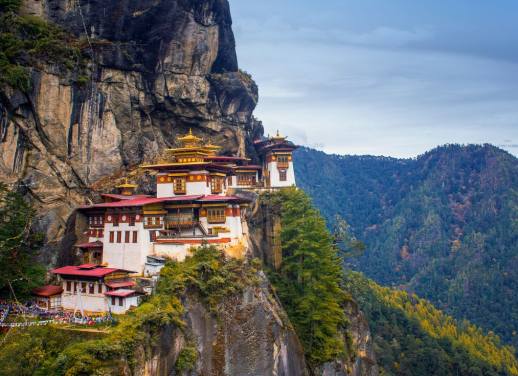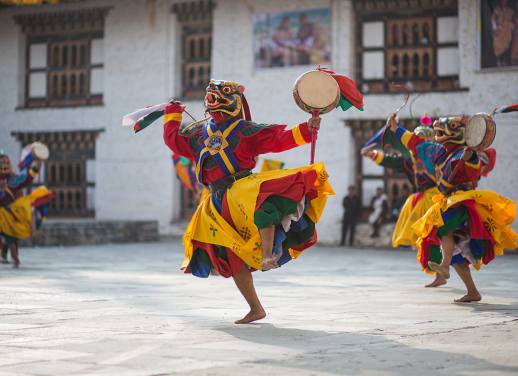Lonely Planet’s annual Best in Travel list is always a highly anticipated, hotly discussed wrap up of what’s trending around the world in the upcoming year – and the 2020 edition is no exception, with the tiny Himalayan kingdom of Bhutan clocking in at number one.
There are many reasons why Bhutan is such an appealing travel destination. For one, the majority of the country is covered in stunning natural landscapes – unspoiled pine forests and the towering Himalayan Mountains. It’s also the first carbon-negative country in the world, meaning it reduces more carbon in the atmosphere through various offsetting measures than it produces as a nation each year. Bhutan sees fewer tourists than its hotspot neighbours like India, China and Nepal, and by 2020, the aim is for all agricultural products within the country to be completely organic.
VIEW OUR FULL RANGE OF BHUTAN TRIPS
We spoke to Intrepid Travel’s Destination Manager for North and Central Asia, Karen Zhao, to find out about her recent trip to Bhutan and why it’s the place to be in 2020.
In particular, Karen remembers one night on her 7-day Bhutan Discovered trip when the group spent the night with a local family.
“We went to a local farm house just outside of Paro. After we all sat down, we were offered butter tea with puffed rice, which is a traditional drink to have before dinner. Then each of us were served a shot of Ara, which is a local spirit made from different type of grains; the taste is very strong, similar to Japanese sake. After we finished the first shot, Pema, our leader, told us that it’s tradition to drink three shots of Ara if you’ve already had one as a guest in someone’s house. So, not wanting to be rude, we did!
“Then, after dinner, Pema and our driver showed us some traditional dancing. The little girl in the family was quite shy, and was peeking around the doorway to find out what all the noise was. It was a fun night and great to see how the locals actually live,” says Karen.
Aside from unusual rules of hospitality, another unique thing about this Buddhist kingdom is their philosophy of happiness, which is not only a way of life but a part of government policy. Bhutan is the only country in the world that ranks Gyalyong Gakid Palzom, or Gross National Happiness (GNH), above Gross Domestic Product (GDP).
GNH is an index measuring the collective wellbeing and happiness of the people of a country. The Bhutanese government introduced it as a goal in 2008, and a portion of the population has been surveyed three times since then, with an increase in national happiness being measured each time.
GNH is calculated based on the nine domains of happiness and four pillars of GNH. The four pillars of GNH are sustainable and equitable socio-economic development, environmental conservation, preservation and promotion of culture, and good governance. The nine domains of happiness are psychological wellbeing, health, time use, education, cultural diversity and resilience, good governance, community vitality, ecological diversity and resilience, and living standards.
“I went to Bhutan thinking that it’d be a spiritual journey… that I’d be learning about Buddhism and that Buddhism is their key to happiness. But also dubious about how they could ever measure happiness and use that as a goal for development.”
“But after seeing part of the country and having interactions with the locals – including our Intrepid leader – I saw that happiness is not something you look for, but something that’ll come to you, as long as you’re down to earth, live your life diligently and with compassion, and learn to be content with what you have.
“I saw how traditions and modern development coexist, I saw people loving their home and looking after their land with great care, finding laughter at the smallest things and understanding how this can have a bigger impact than what a religion preaches.”
READ MORE: 5 LESSONS I LEARNED FROM VISITING BHUTAN WITH INTREPID
Karen recounted one of those smaller moments that brought the group to laughter on the first day of the tour.
“We had this one, very funny experience when we first arrived, where some of our group needed to exchange some currency for the local Nu. Pema took us to this shoe and clothes shop, which was also a currency exchange shop! It was so funny seeing the lady surrounded by shoes in this little store counting out money and doing exchanges for us.”
But there was one day in particular that helped Karen appreciate the inner happiness of the Bhutanese people most of all, when her group visited the iconic Tiger’s Nest monastery.
“It was drizzling, and we needed to walk uphill to the monastery, which hangs off the side of the mountain. When we arrived, Pema encouraged us to do a little bit of meditation in one of the halls. Even though there were other groups coming and going, it was a moment to build a connection to yourself by simply being present. It reinforced the lesson of finding inner peace, no matter what environment you are in. For me, it was one of the most sincere moments of just ‘being there’. In a way, the monastery reminded me a bit of Bhutan overall – high up, isolated, with harsh natural conditions, but full of people who seek peace and happiness.”
Do you want to experience the peace and beauty of Bhutan for yourself? Book a place on one of our Bhutan trips.
Hero image via Shutterstock.

